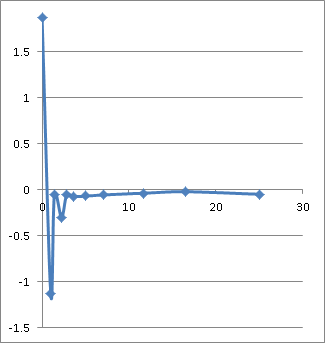Vertical Derivative Convolution
Use the Grid and Image > Filters > Vertical Derivative Convolution menu option (GRIDVD GX) to apply a vertical derivative convolution filter to a grid.
Vertical Derivative Convolution dialog options
|
Name of the input grid. Script Parameter: GRIDVD.GRD |
|
|
New resultant grid |
Name of the vertical derivative grid. Script Parameter: GRIDVD.NEW |
Application Notes
The vertical derivative convolution filter (VDCF hereafter) method will benefit a very large grid for both memory storage economy and speed improvement.
The VDCF is a 5th order radially symmetrical filter, formulated by Henderson1 as expressed below:
Where:
a is the filter increment
f(a) is the field value at point a
m is the order of the convolution filter
Herderson further evaluated the VDCF for 10 numeric coefficient. Simplifying the above equation to the form below:
The coefficients D(ai) are:
Index a Coefficient 0 0 1.87282 1 1 -1.13625 2 √2 -0.05949 3 √5 -0.30210 4 2√2 -0.05857 5 √13 -0.07597 6 5 -0.07072 7 5√2 -0.05758 8 √136 -0.03905 9 √274 -0.02286 10 25 -0.05020
VDCF Radial Graph:
These coefficients are interpolated and normalized on a 51x51 convolution window and applied to the input grid.
Reference
- R. G. Henderson, "A Comprehensive System of Automatic Computation in Magnetic and Gravity Interpretation", Geophysics, vol. 25 (1960), pp. 569 - 585.
Got a question? Visit the Seequent forums or Seequent support
© 2023 Seequent, The Bentley Subsurface Company
Privacy | Terms of Use

